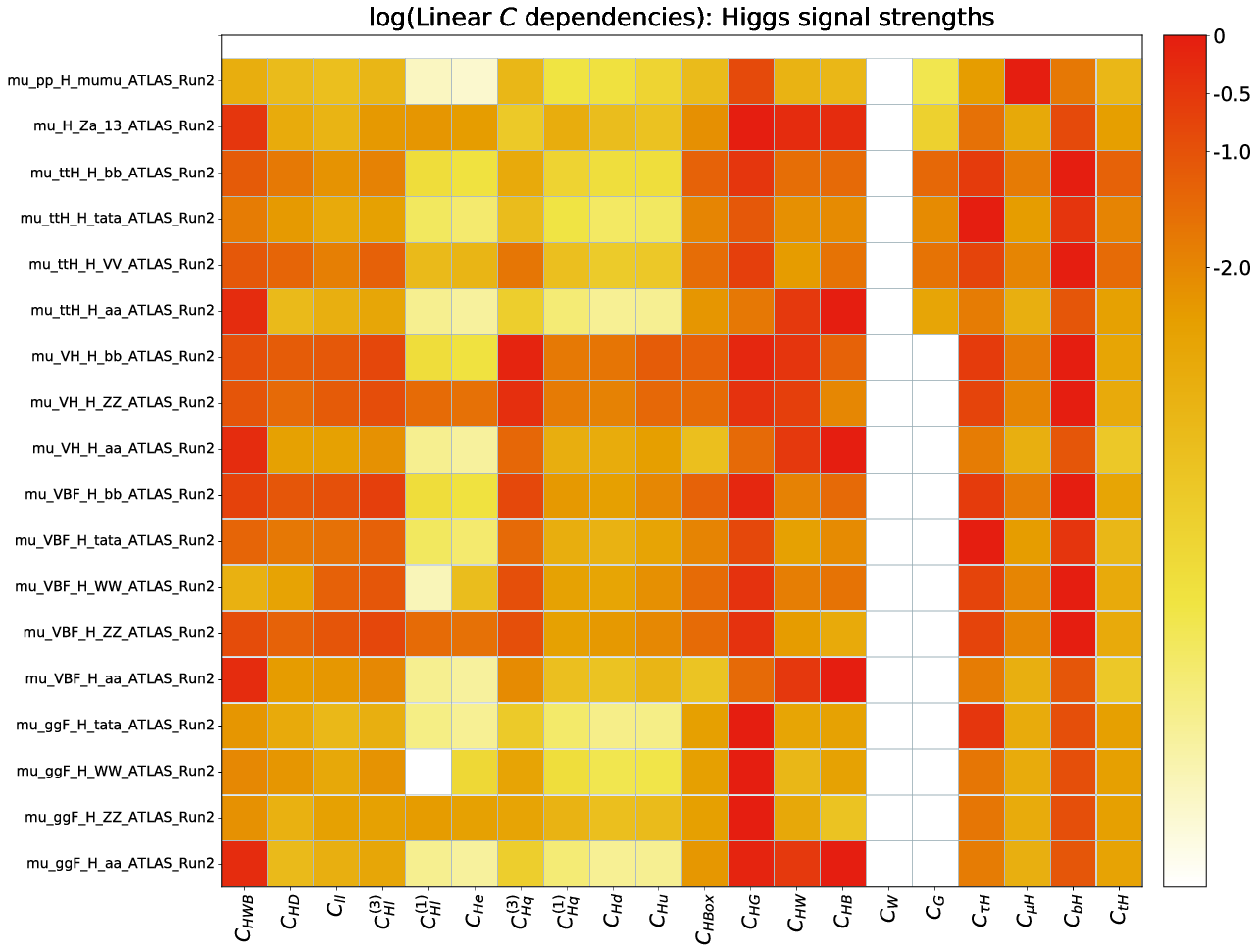LHC EFT WG Report: Experimental Measurements and Observables
- Castro, Nuno et al
- arXiv:2211.08353CERN-LHCEFTWG-2022-001CERN-LPCC-2022-05
 | : justification=centerlast |
 | : Caption not extracted |
 | : justification=centerlast |
 | justification=centerlast : Schematic representation of STXS 1.2 bins for the electroweak production of the Higgs boson in association with two jets~\cite{lhcxwg}. |
 | \small Schematic representation of the datasets and their overlapping dependences on the 34 Wilson coefficients included in the analysis of Ref.~\cite{Ellis:2020unq} |
 | Logarithm of normalised linear dependences for diboson measurements, as in Fig.~\ref{fig:EWPO}. |
 | Logarithm of normalised linear dependences for Higgs signal strength measurements, as in Fig.~\ref{fig:EWPO}. Dependences include effects in both production and decay. |
 | 95\% CL individual limits from electroweak measurements. |
 | 95\% CL individual limits from diboson measurements. |
 | 95\% CL individual limits from Higgs measurements. |
 | 95\% CL individual limits from Higgs STXS measurements. |










